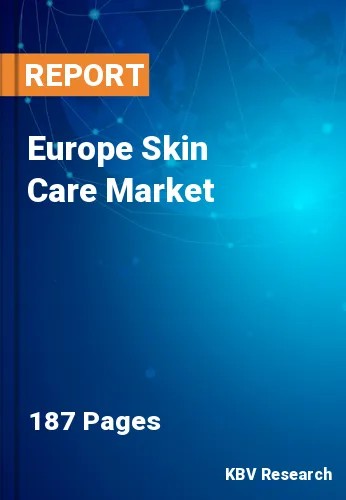The Europe Skin Care Market would witness market growth of 5.5% CAGR during the forecast period (2023-2030). In the year 2020, the Europe market's volume surged to 2,655.1 million units, showcasing a growth of 5.7% (2019-2022).
Technological advancements, scientific breakthroughs, and a deeper understanding of skin biology have paved the way for groundbreaking products. Integrating artificial intelligence and machine learning in skin care diagnostics is a notable stride, enabling personalized recommendations based on individual skin profiles. Nanotechnology has also made significant contributions, facilitating the development of products with enhanced absorption and targeted delivery of active ingredients. Moreover, the convergence of beauty and wellness has given rise to holistic approaches, with ingestible skin care supplements gaining popularity. From collagen-infused beverages to dietary supplements rich in antioxidants, these products claim to nourish the skin from within, complementing topical treatments. The fusion of traditional remedies with modern science is evident in incorporating ingredients like adaptogens and botanical extracts known for their skin-soothing properties.
With aging comes a heightened interest in addressing visible signs, such as wrinkles, fine lines, and sagging skin. The aging population contributes to a growing demand for anti-aging skincare products that promise to reduce the appearance of age-related skin concerns. The aging population is increasingly adopting preventive skincare practices. Rather than solely focusing on treating existing signs of aging, individuals are incorporating skincare routines and products into their daily regimens to prevent the onset of age-related issues proactively. Aging individuals are placing a greater emphasis on maintaining overall skin health and adopting products promoting skin health, hydration, and resilience, resulting from the perception that skin care is essential to self-care and well-being.
According to a report on the French aging policy published by the UN, as in other European countries, France faces a continuous and significant increase in older people. The nation had 15 million people aged more than 60 in France in 2012, expected to reach 24 million in 2060. The factors mentioned above will drive the regional market growth.
The Germany market dominated the Europe Skin Care Market by Country in 2022 and would continue to be a dominant market till 2030; thereby, achieving a market value of $14,118 Million by 2030. The UK market is showcasing a CAGR of 4.5% during (2023 - 2030). Additionally, The France market would register a CAGR of 6.3% during (2023 - 2030).
Based on Gender, the market is segmented into Female, and Male. Based on Packaging, the market is segmented into Tubes, Bottles & Jars, and Others. Based on Distribution Channel, the market is segmented into Offline, and Online. Based on Product Type, the market is segmented into Creams & Moisturizers, Cleansers & Face Wash, Powder, and Others. Based on countries, the market is segmented into Germany, UK, France, Russia, Spain, Italy, and Rest of Europe.
Free Valuable Insights: The Global Skin Care Market will Hit $244.8 Billion by 2030, at a CAGR of 6.2%
The market research report covers the analysis of key stake holders of the market. Key companies profiled in the report include The Colgate Palmolive Company, The Procter & Gamble Company (P&G), Johnson & Johnson, Unilever PLC, The Estee Lauder Companies, Inc., Shiseido Company Limited, Kao Corporation, Avon Products, Inc. (Natura & Co Holding SA), Revlon, Inc. (MacAndrews & Forbes), L'Oréal S.A.
By Gender (Volume, Million Units, USD Billion, 2019 to 2030)
By Packaging (Volume, Million Units, USD Billion, 2019 to 2030)
By Distribution Channel (Volume, Million Units, USD Billion, 2019 to 2030)
By Product Type (Volume, Million Units, USD Billion, 2019 to 2030)
By Country (Volume, Million Units, USD Billion, 2019 to 2030)
Our team of dedicated experts can provide you with attractive expansion opportunities for your business.

